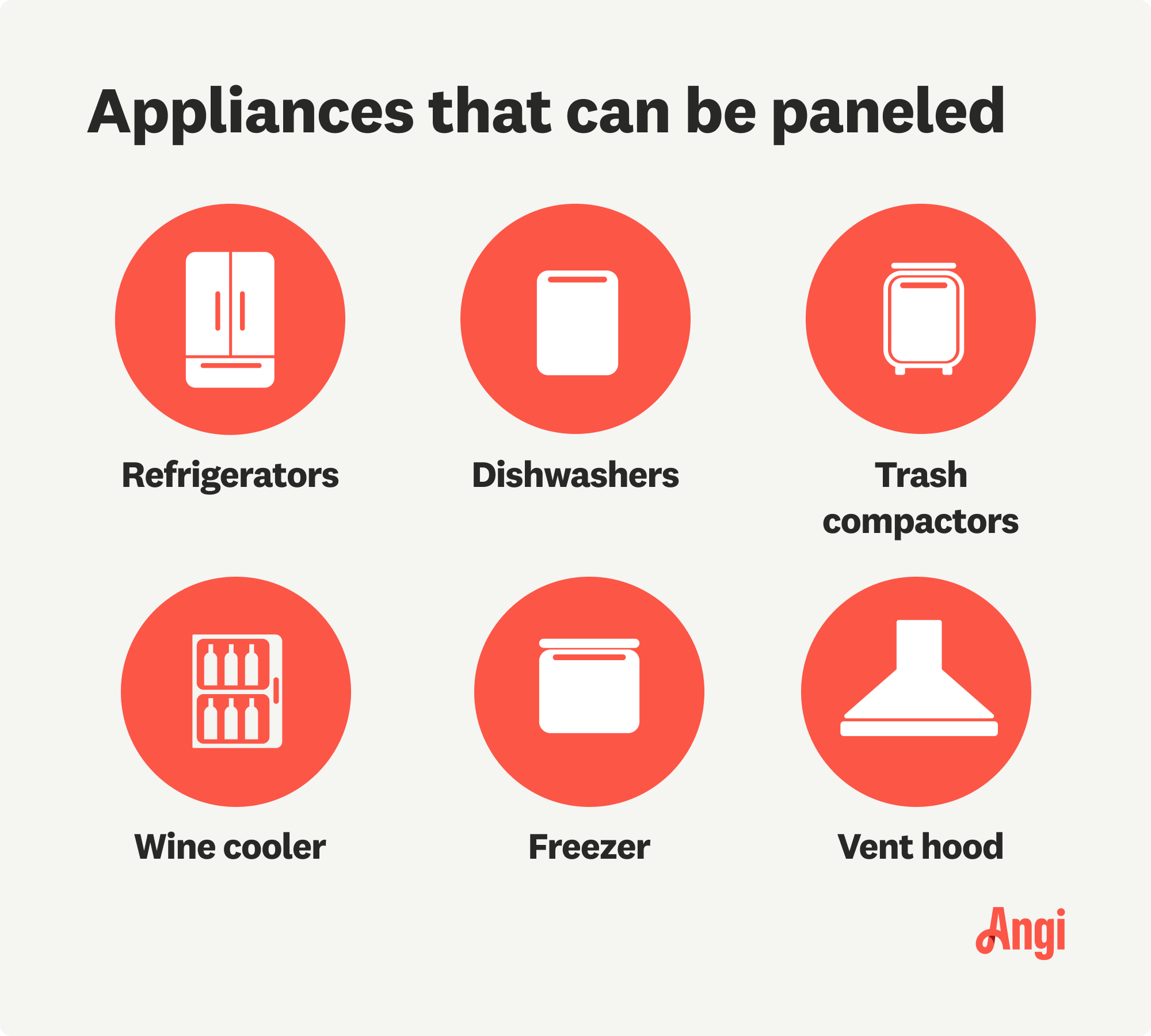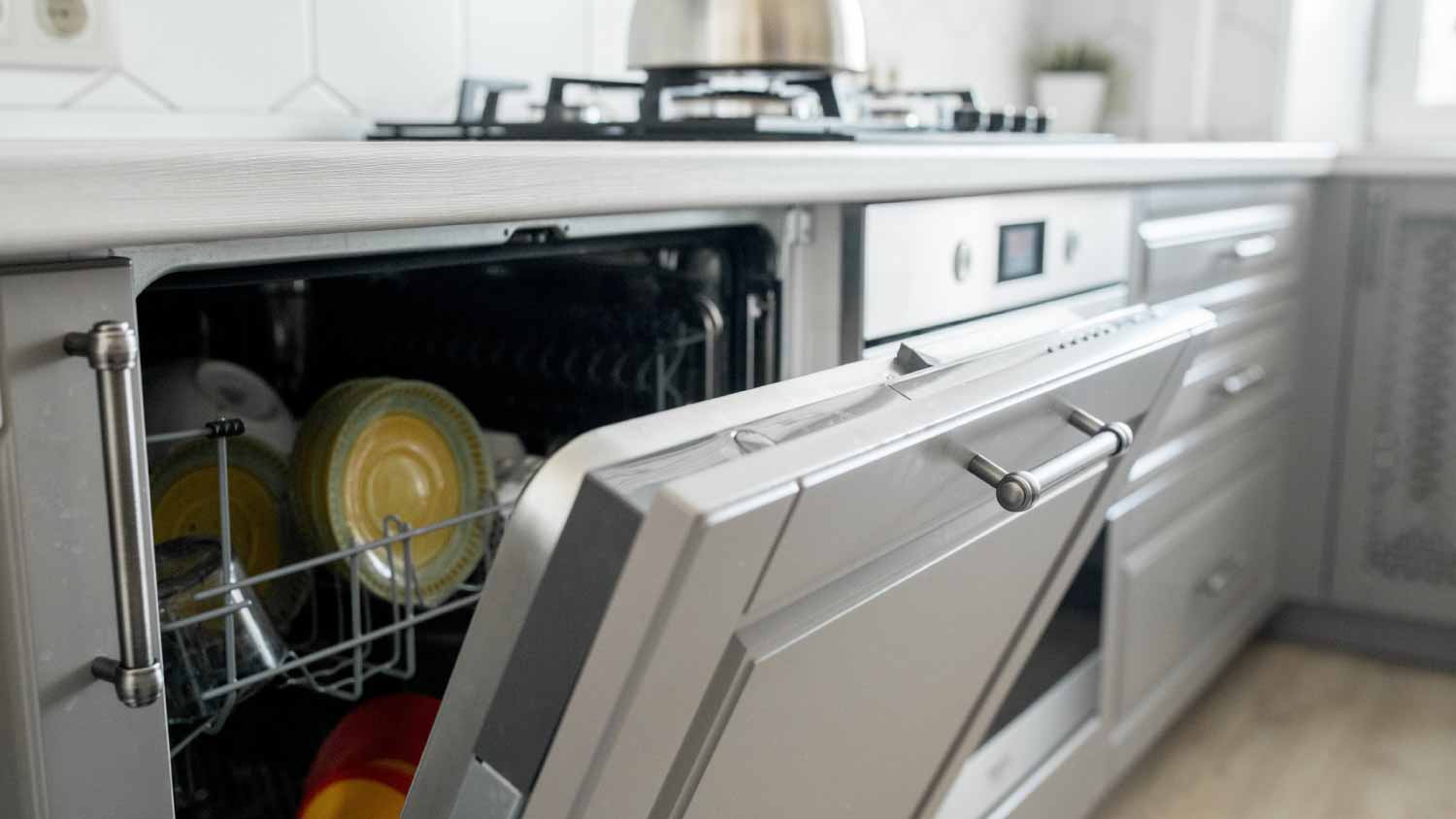
Looking to keep warm this winter without the high utility bills? Use this pellet stove installation cost guide to see what a natural heating solution will cost.
Real talk on panel ready appliances


Panel ready appliances create sleekness and continuity in a kitchen by hiding appliances behind custom cabinet panels.
Panel ready appliances cost significantly more compared to traditional appliances.
Some panel ready appliances are smaller than ordinary appliances in order to be flush with cabinets.
Panel ready appliances can either be overlaid or integrated.
When you're designing an aesthetic kitchen, ordinary appliances won't always provide the polished look you want. That's why you might be considering upgrading to the elite look of panel-ready appliances. What is a panel-ready appliance? Panel-ready appliances have unfinished faces that are ready to accept custom panels that match your cabinetry. While panel-ready appliances are commonly used in high-end kitchens, there are some pros and cons to know about before settling on this design choice.

Panel appliances are designed to blend in with cabinetry. They essentially allow your design theme to dominate the room without the visual interruption caused by modern appliances. While panel ready appliances function the same as traditional appliances, they have "blank slate" front panels that can be customized to match your kitchen cabinets using wood, stainless steel, or other materials.

As people have become obsessed with creating aesthetic kitchens, panel ready appliances have gained popularity. It's true that this is one of the best ways to create continuity in a kitchen. However, you should know the pros and cons of panel ready appliances before committing.
Creates a seamless appearance that essentially hides your appliances behind cabinetry without making them inaccessible.
Allows you to design a 100% custom kitchen using essentially any style, color, or finish.
No worries about visible fingerprints on appliances.
Can increase a home's resale value.
With your appliances covered by cabinetry, you can focus on the functions and features you want instead of getting hung up on the look of your appliances.
If you remodel a kitchen in the future, the panels can be changed without replacing appliances.
Panel ready appliances cost more compared to traditional appliances.
If you're in a rush to remodel a kitchen, wait time for the fitting process of a panel ready appliance may take longer.
Installation and assembly cost more compared to ordinary appliances.
In order to make panel ready appliances flush with the surrounding cabinets, they are often designed to be narrower than standard appliances. That means you're trading in usable space for aesthetic appeal. The difference tends to be the most dramatic with refrigerator sizes.
Guests may have a hard time finding your refrigerator, beverage cooler, dishwasher, or other appliance in a kitchen where appliances are concealed by cabinet panels.
It can be harder to know what to do with old appliances that have custom panels because they won't match most kitchens.
Paneled appliances need to be hooked up the same way as any appliance in order to work. However, they are also fitted with custom cabinet doors and panels. When the appliance door opens and closes, a set of hinges that support both the appliance door and cabinet door will allow them to act as one.
The two types of panel ready appliances are overlay appliances and integrated appliances. Overlay appliances feature custom cabinet doors that are designed to "stick" to the front of the appliance. With an overlay panel ready appliance, the appliance's ventilation system is always exposed. From an aesthetic standpoint, this means that your appliance will protrude slightly from the cabinets. Metal ventilation features will also be exposed.
An integrated appliance uses the same type of custom-matching cabinet panel as an overlay appliance. The difference is that integrated appliances are installed to be fully flush with your cabinetry. Even the ventilation system is designed to be concealed. As a result, integrated panel ready appliances are far more seamless compared to overlay panel ready appliances.
While appliance installation cost for regular appliances ranges from $123 to $299, the cost to install a panel ready appliance with paneling and extra ventilation work is between $400 and $2,500. In addition, appliance repair cost can be higher with panel ready designs due to their unique ventilation setups.
From average costs to expert advice, get all the answers you need to get your job done.

Looking to keep warm this winter without the high utility bills? Use this pellet stove installation cost guide to see what a natural heating solution will cost.

Get expert insights on dishwasher repair cost, including average prices, key cost factors, and tips to save money on repairs.

One of the most common fridge problems is a blown compressor motor. Use this guide to determine the cost of replacing the compressor and to estimate the total cost of your repair.

You have options for disposing of old appliances, like your refrigerator, freezer, washer or dryer. Use this guide to learn what to do with old appliances.

Learning how to install a washing machine standpipe drain is not the most complicated task, but you need to follow the steps precisely to ensure nothing leaks or breaks.

Short on kitchen counter space? Learn how to install a microwave over a stove in 10 simple steps in this how-to guide.